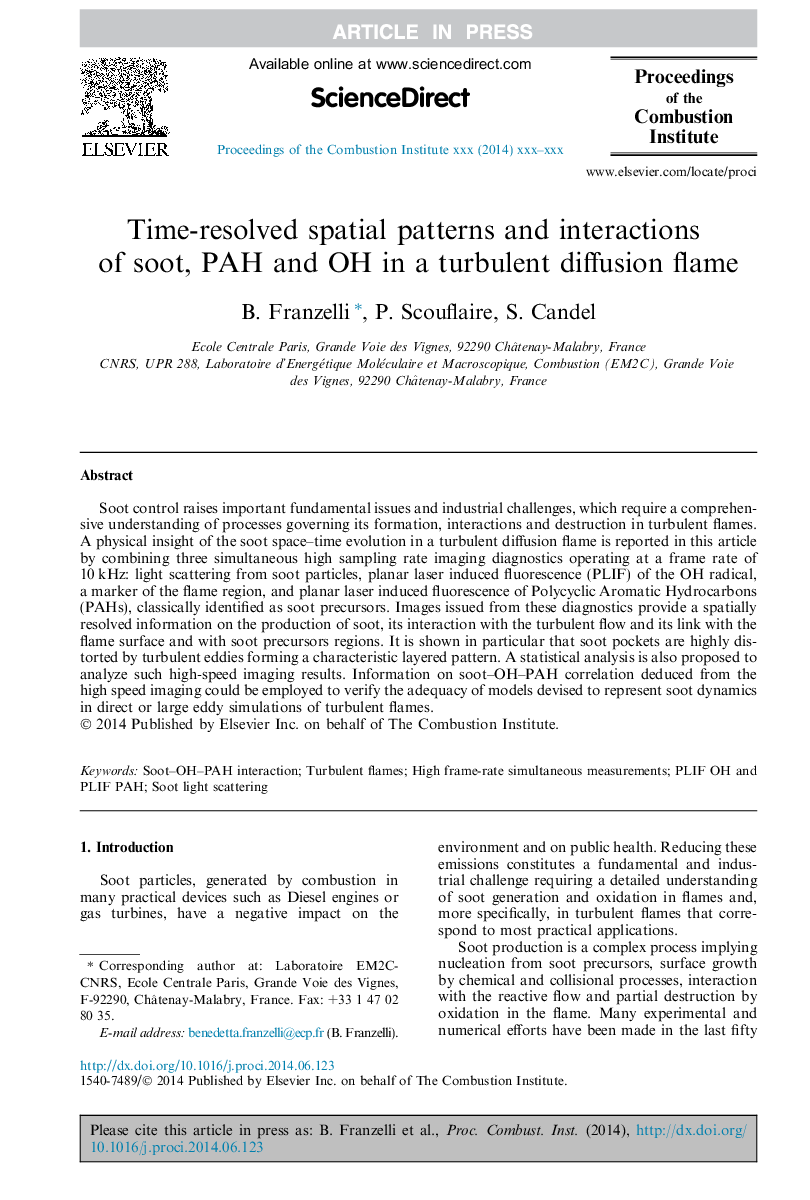| Article ID | Journal | Published Year | Pages | File Type |
|---|---|---|---|---|
| 6679344 | Proceedings of the Combustion Institute | 2015 | 9 Pages |
Abstract
Soot control raises important fundamental issues and industrial challenges, which require a comprehensive understanding of processes governing its formation, interactions and destruction in turbulent flames. A physical insight of the soot space-time evolution in a turbulent diffusion flame is reported in this article by combining three simultaneous high sampling rate imaging diagnostics operating at a frame rate of 10Â kHz: light scattering from soot particles, planar laser induced fluorescence (PLIF) of the OH radical, a marker of the flame region, and planar laser induced fluorescence of Polycyclic Aromatic Hydrocarbons (PAHs), classically identified as soot precursors. Images issued from these diagnostics provide a spatially resolved information on the production of soot, its interaction with the turbulent flow and its link with the flame surface and with soot precursors regions. It is shown in particular that soot pockets are highly distorted by turbulent eddies forming a characteristic layered pattern. A statistical analysis is also proposed to analyze such high-speed imaging results. Information on soot-OH-PAH correlation deduced from the high speed imaging could be employed to verify the adequacy of models devised to represent soot dynamics in direct or large eddy simulations of turbulent flames.
Keywords
Related Topics
Physical Sciences and Engineering
Chemical Engineering
Chemical Engineering (General)
Authors
B. Franzelli, P. Scouflaire, S. Candel,
